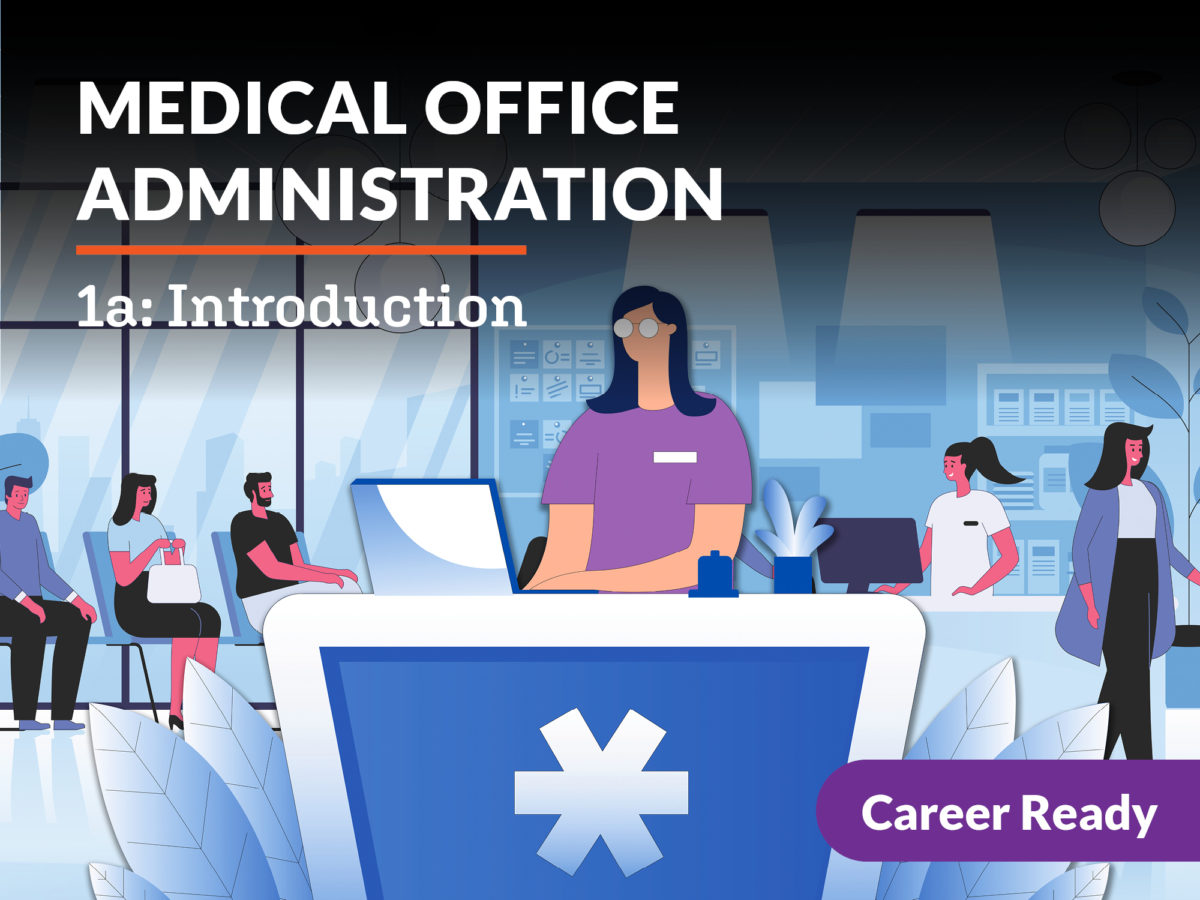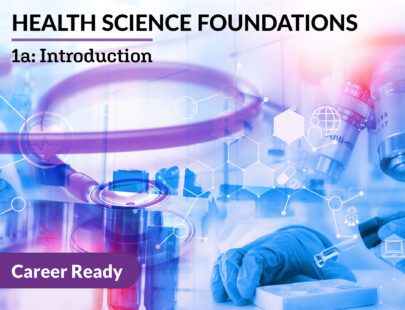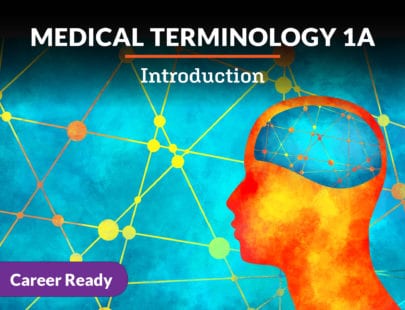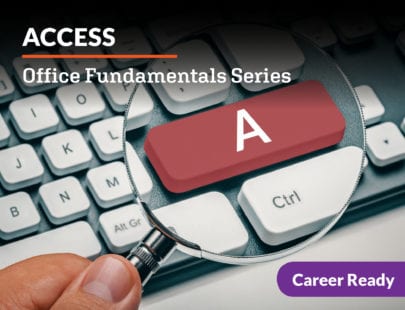
Medical Office Administration 1a: Introduction
Caring for a patient takes more than a medical degree: it takes a team! In this course, you will build your knowledge of medical terminology, medical office processes, the technology that keeps an office humming, and the laws that keep it operating ethically. You’ll also explore different office roles all while building the beginnings of a portfolio. Let’s march through the waiting room and throw open the doors to a career as a Medical Office Admin today!
Units at a Glance
Unit 1: Working in the Medical Office
You’ve likely been to a medical office to see your physician and you may even have spoken with the receptionist. But do you know how a medical office operates? What are its functions? Who are the people who work there? What are their roles and responsibilities in helping to run the office efficiently for patients, physicians, and other healthcare providers? You’re about to find out! Let’s step inside a medical office and get to know some of its employees and what they do. Who knows, after you get to know them, you might just be intrigued enough to look for a career path in the medical office!
What will you learn in this unit?
- Articulate the functions of the medical office
- Describe the positions and responsibilities of medical office employees
- Identify and describe the career paths available in the medical office setting
- Explain how the medical office fits into the big picture of health care in the United States
Unit 2: Communication and Professionalism
In any job, communication is extremely important. In healthcare facilities, communication is critical because it affects patients’ health, safety, and, at times, their very survival. Imagine what can happen if a medical assistant does not listen closely to crucial medical information provided by a patient or does not communicate the information to the physician. Medical office staff must not only communicate with patients but with each other and other healthcare workers, and they must do so effectively, for the care and safety of every patient.
What will you learn in this unit?
- Define communication and explain its importance in health care
- Describe what it means to communicate with professionalism
- Identify communication skills required for employees in the medical office
- Outline office procedures for verbal communication with patients
Unit 3: Medical Terminology: The Language of Health Care
Parlez vous français? Imagine going on a school trip to France. In addition to getting a passport and packing your bags, you might think about learning the basics of the French language so you can communicate with people while in France. Working in health care is similar to visiting a foreign country. Before working in the medical field, you must understand the language to communicate effectively with the patients, staff, and providers. We call this language medical terminology, and it’s really easier to learn than most people think. Healthcare workers must have a working knowledge of medical terminology and be able to use the language in both verbal and written forms.
What will you learn in this unit?
- Describe the history of medical terminology
- Define the four parts of a medical term
- Demonstrate knowledge of common medical terms and abbreviations
- Summarize guidelines for spelling and pronunciation of medical terms
- Explain how medical terminology is used in written and verbal communications
Unit 4: Procedures in the Medical Office
Most jobs require employees to follow certain procedures. Why? Policies and procedures act as a roadmap for the organization. Patients have high expectations of their physician and the medical office. They expect the staff to be knowledgeable in their jobs and that they follow office policies and procedures consistently. Procedures outline expectations of employees when conducting daily tasks. Following procedures helps internal processes run more efficiently and procedures safeguard the office against legal action, ensuring compliance with law and regulations. Most importantly, the primary reason to know and understand policies and procedures is so that we provide quality patient care in a safe environment.
What will you learn in this unit?
- Provide examples of the importance of policies and procedures
- Summarize the procedures for opening and closing the medical office
- Describe procedures for managing incoming and outgoing communications
- Outline basic procedures for scheduling, preauthorization, and referrals
- Give examples of other required policies
Unit 5: Procedures and Patient Care
Clerical procedures in healthcare facilities are associated with either administrative tasks or clinical/patient care. Clerical procedures associated with clinical services affect patient care and are carried out by employees who possess a basic set of clinical skills, such as medical assistants, nursing assistants, nurses, etc. The focus of this unit is on the clerical procedures associated with direct patient care.
What will you learn in this unit?
- Identify the type of employee positions that assist providers with patient care
- Describe the procedure for a patient exam conducted by the assistant
- Outline the components of a pre-op and post-op order
- Explain the admission process followed by the health unit coordinator
- Compare and contrast the use of electronic medical records and paper records
Unit 6: Information Technology in the Medical Office
The medical office relies on a variety of technology and computer systems to accomplish daily tasks and meet patient expectations. Years ago, a patient would call the office to get an appointment and/or request copies of their medical record. Now, patients can make appointments, request medication refills, and obtain copies of their record through the office’s patient portal. Technology that was once a luxury for large offices and organizations is now a necessity, and even the smallest offices can afford to use it. Examples of advances in technology include the electronic medical record, electronic prescribing, patient portals, email and voicemail reminders, automated patient appointments, and telemedicine. It’s amazing how the practice of medicine has been transformed by a computer.
What will you learn in this unit?
- Describe how technology has affected health care in the past 50 years
- List the basic technology skills needed in the medical office
- Identify the functions of a medical office computer system
- Summarize the responsibilities of information technology (IT) support personnel
Unit 7: Medical Records Management
Medical records are used to gather and document patients’ health and administrative information. Electronic medical records organize information in a manner that is easy to read, easy to search, and easy to use. Most medical offices use electronic medical records, but there are still some that prefer paper records. The offices that use electronic records still may use paper forms for certain services, but later transfer that information to the electronic record. Medical records assist physicians in providing the best care possible to their patients. They are also used to track information for reporting and data collection purposes. Everyone in the medical office should understand how a record is created, the content, organization of content, filing methods, and the legal requirements for working with medical records.
What will you learn in this unit?
- Explain why medical facilities have converted from paper to electronic medical records
- Provide examples of how different office staff use electronic medical records
- Identify processes for using paper medical records
- List the primary responsibilities of the medical records staff
Unit 8: Medical Law and Ethics
What if you were asked by a friend to find out why their daughter came to your medical office last week. Would you do it? Can you do it? No, you cannot—because this is against the law. Anyone working in a healthcare setting must have a working knowledge of medical law and ethics. Whether you are working in the office setting or providing direct patient care, you must understand and abide by the laws and ethics set forth by state and federal governments and organizations such as the American Medical Association. We study law and ethics so that we know these laws and can therefore protect our providers and their employees from unwanted legal situations.
What will you learn in this unit?
- Identify the primary reason to study law and ethics in health care
- Give an example of each of the four HIPAA standards
- Explain workplace laws and how they affect the medical office
- Examine the role of ethics in the medical office
- Describe the advanced directive process
Required Materials
Physical
- Audio recording device
- Camera
- Index cards
- Medical reference source, print or online
- Printer
- Scanner
- Video recording device
Software
- Presentation software
- Word processing software
Other
- Classmate or friend to be mock patient or mock caller
Optional
- Flowchart software
- Art supplies
- Product manuals, print or online



